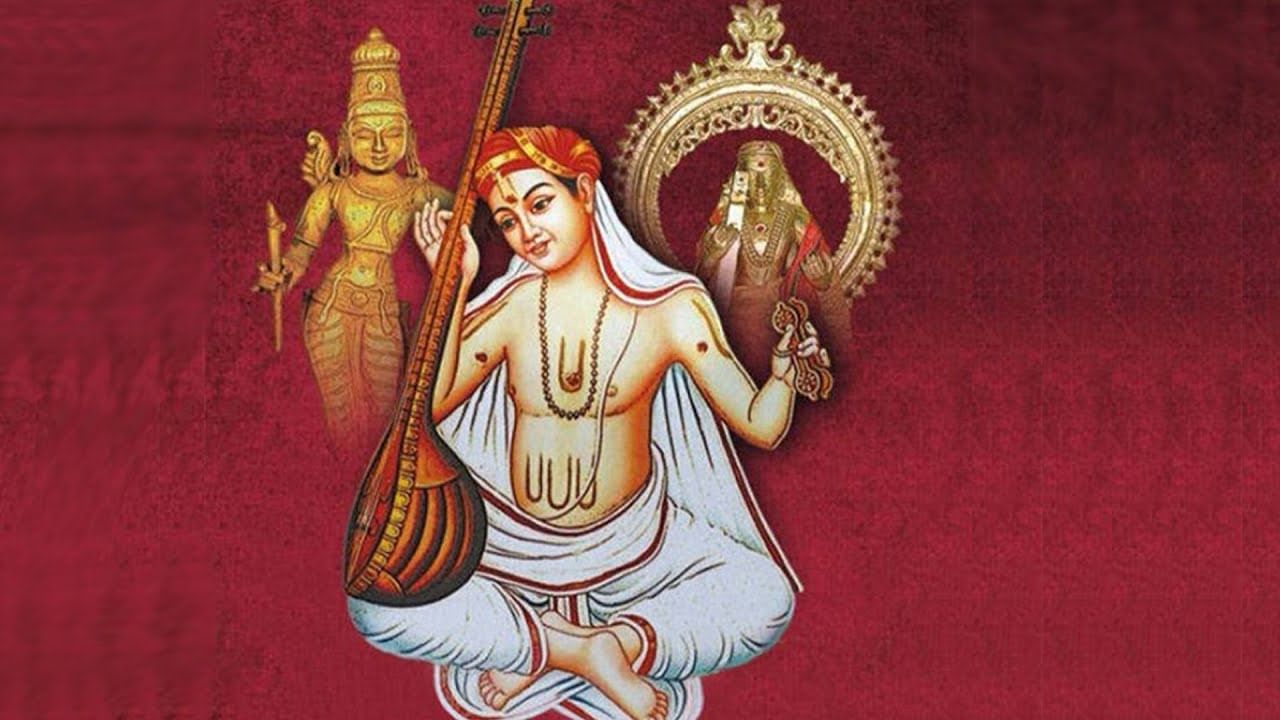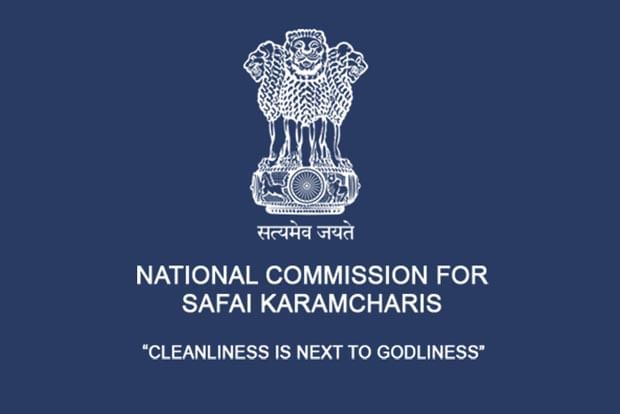Best Study Material for CLAT Exam
CLAT Exam > CLAT Notes > Current Affairs: Daily, Weekly & Monthly > UPSC Daily Current Affairs- January 23, 2022
UPSC Daily Current Affairs- January 23, 2022 | Current Affairs: Daily, Weekly & Monthly - CLAT PDF Download
GS-I
The making of the Tyagaraja Aradhana

Context
Owing to the spread of the Omicron variant, the Tyagaraja Aradhana in Thiruvaiyaru has been reduced to just one day this year, instead of the usual five days.
About Tyagaraja and Tyagaraja Aradhana
- Birth and Death: He was born on May 4, 1767 in Madras Presidency and died on January 6, 1847, Madras Presidency.
- Indian composer of Carnatic songs: of the genre kirtana, or kriti (devotional songs), and of ragas.
- He is the most prominent person in the history of southern Indian classical music, and he is venerated by contemporary Carnatic musicians.
- Tyagaraja is said to have composed the music and words of thousands of kriti.
- Telugu texts: He spent much of his life at the court of Tanjore (now Thanjavur), where the official language was Telugu; thus, most of his songs have Telugu texts.
- Trinity of Carnatic music: He is considered the head of a group of three major composers who flourished at Tanjore in the early 19th century, the others being Muthuswami Dikshitar and Syama Sastri.
- Most of Tyagaraja’s songs: were in praise of Rama, who, like Krishna, is believed to be an incarnation of the god Vishnu.
- Tyagaraja became a devotee of Vaishnava at an early age and is regarded as an exponent of gana-marga—i.e. salvation through devotional music.
- Tyagaraja Aradhana is an annual aradhana
- The aradhana is held every year on the anniversary of the demise of the saint.
- The music festival is observed in the states of Andhra Pradesh and Tamil Nadu, primarily in Thiruvaiyaru in Thanjavur district of Tamilnadu, the place where Tyagaraja attained Samadhi.
- The aradhana is observed on Pushya Bahula Panchami day when the saint attains samadhi, where the musicians will render the saint's Pancharatna Kritis.
GS-II
National Commission for Safai Karamcharis

Context
Recently, The Union Cabinet, chaired by the Prime Minister of India approved the extension of the tenure of the National Commission for Safai Karamcharis (NCSK) for three years beyond 31.3.2022.
- The major beneficiaries would be the Safai Karamcharis and identified manual scavengers in the country since the NCSK for 3 more years beyond 31.3.2022.
- The number of Manual Scavengers identified under the MS Act Survey as of 31.12.2021 is 58098.
About National Commission for Safai Karamcharis
- The National Commission for Safai Karamcharis (NCSK) was constituted on 12th August 1994 as a statutory body by an Act of Parliament viz. ‘National Commission for Safai Karamcharis Act, 1993’, for three years.
- The tenure is extended from time to time through Government Resolutions.
- It is acting as a non-Statutory body of the Ministry of Social Justice and Empowerment.
Its Functions
- It has been giving its recommendations to the Government regarding specific programmes for the welfare of Safai Karamcharis, studying and evaluating the existing welfare programmes for Safai Karamcharis, investigating cases of specific grievances etc.
- It also monitors the implementation of the Prohibition of Employment as Manual Scavengers and their Rehabilitation Act, 2013.
GS-III
Ranking of states on faster green nods

Context
- Recently, the Union Ministry of Environment, Forests and Climate Change (MoEF&CC)has decided to “incentivise states” by ranking them through a star-rating system based on “efficiency and timelines in the grant of environmental clearances”.
About Ranking of states on faster green nods
- MoEF&CC issued an office memorandum defining criteria for a rating of State Environment Impact Assessment Authorities (SEIAA).
- The evaluation of the efficiency of respective SEIAA is premised on the number of days it takes to appraise a project for environmental clearance — the faster the project appraisal, the higher the SEIAA score.
The order lists the parameters for the rating system
- An SEIAA will get 2 marks if it takes less than 80 days on average for grant clearance
- 1 for less than 105 days
- 0.5 for 105-120 days
- 0 for over 120 days.
- The state authorities will also be rated on the percentage of disposal of fresh Terms of Reference (TOR) or TOR amendment proposals pending for over 30 days.
- After a project is screened, the authority provides the client a Terms of Reference (TOR) document which defines the purpose and structures of the project, committee, meeting, negotiation etc.
- The ministry has allotted 1 mark for SEIAAs which clear over 90 per cent of TORs
- 0.5 for 80-90 per cent
- 0 for less than 80 per cent clearance.
- Similarly, for disposal of fresh environmental clearances as well as environmental amendment proposals pending for over 100 days, SEIAAs will get 1 mark for over 90 per cent clearance
- 0.5 for 80-90 per cent clearance; and 0 for less than 80 per cent.
- The state authorities will also be rewarded for seeking fewer environmental details.
- If the percentage of EDS (essential details sought) cases is less than 10 per cent, the SEIAAs will get 1 mark; if it is 20 per cent, they will get 0.5; and if it is over 30 per cent, they will get 0.
- The rating system also takes into account the disposal of complaints: 1 mark if all complaints are redressed; 0.5 if 50% complaints are redressed; and 0 for less than 50%.
- Based on these parameters, if an SEIAA gets more than 7 marks, it will be ranked as 5-star (the highest ranking).
- The state authorities can be ranked as 5, 4, 3, 2 and 1-star, depending on their cumulative score.
- Any SEIAA which gets a total of less than 3 marks will get no star.
Significance
- The rating system will encourage transparency, efficiency and accountability.
- It will also improve “ease of doing business’’
- The move is intended as a mode of recognition and encouragement as well as for promoting improvements where needed.
- It also recalled how its several initiatives in the past had cut down the average time taken in the grant of Environment Clearance (EC) to 75 days as against the prescribed timeline of 105 days.
Criticism of the move
- The decision will reduce environmental law compliance to a mere formality as the role of SEIAA is to give nod after detailed scrutiny which takes time.
- The environmentalists warned that the state authorities, whose mandate is to ensure the protection of the environment, will now “compete’’ to clear projects swiftly, to increase state rankings.
- These parameters completely put the onus of the project clearance on the authority and absolve proponents of submitting quality applications for review.
- There is a lack of documentation in some cases, and in others, the information provided is not sufficient to form any decision.
- Allocating less score if more information is sought (EDS) from the proponent during appraisal defeats the whole purpose of seeking environmental clearance and safeguarding the environment.
The document UPSC Daily Current Affairs- January 23, 2022 | Current Affairs: Daily, Weekly & Monthly - CLAT is a part of the CLAT Course Current Affairs: Daily, Weekly & Monthly.
All you need of CLAT at this link: CLAT
|
965 docs|676 tests
|
FAQs on UPSC Daily Current Affairs- January 23, 2022 - Current Affairs: Daily, Weekly & Monthly - CLAT
| 1. What is the meaning of GS-I in UPSC? |  |
| 2. What is the significance of GS-II in UPSC? |  |
Ans. GS-II refers to General Studies Paper-II in the UPSC examination. This paper focuses on topics related to governance, polity, and international relations. It tests candidates' understanding of the Indian Constitution, governance systems, social justice, and various aspects of international relations.
| 3. How can I prepare for GS-III in UPSC? |  |
Ans. To prepare for GS-III (General Studies Paper-III) in UPSC, candidates can follow these steps:
1. Understand the syllabus: Familiarize yourself with the topics mentioned in the GS-III syllabus, which include subjects like economy, agriculture, technology, environment, disaster management, and security issues.
2. Read standard textbooks: Refer to recommended textbooks on different subjects to gain a comprehensive understanding.
3. Follow current affairs: Stay updated with current affairs related to the topics mentioned in the syllabus. Read newspapers, magazines, and online sources regularly.
4. Practice answer writing: Practice writing answers to previous years' question papers and mock tests to improve your writing skills and time management.
5. Revision and self-assessment: Regularly revise the topics you have covered and assess your progress by taking mock tests and analyzing your performance.
| 4. What are the benefits of daily current affairs preparation for UPSC? |  |
Ans. Daily current affairs preparation for UPSC offers the following benefits:
1. Stay updated: It helps candidates stay updated with the latest happenings in India and around the world, which is crucial for the UPSC examination.
2. Enhance knowledge: Daily current affairs preparation broadens candidates' knowledge base and helps them understand the interconnectedness of different subjects.
3. Improves analytical skills: Regularly analyzing current affairs requires critical thinking and enhances candidates' analytical skills, which are essential for answering UPSC questions.
4. Answer writing practice: Daily current affairs preparation provides opportunities to practice answer writing, which is a key component of the UPSC examination.
5. Boosts confidence: Being well-versed in current affairs gives candidates confidence during the interview and personality test stages of the UPSC exam.
| 5. How can I find frequently asked questions (FAQs) related to UPSC current affairs? |  |
Ans. To find frequently asked questions (FAQs) related to UPSC current affairs, candidates can:
1. Search online: Use search engines to find websites, forums, and blogs that provide UPSC-related FAQs on current affairs.
2. Join UPSC preparation groups: Join online communities and groups dedicated to UPSC preparation, where candidates often share and discuss FAQs related to current affairs.
3. Refer to study materials: Many UPSC preparation books and study materials include FAQs on current affairs, which can be helpful for revision.
4. Follow UPSC-related websites: Subscribe to or regularly visit reputable UPSC-related websites that publish FAQs and provide guidance on current affairs preparation.
5. Engage with mentors and experts: Seek guidance from mentors, experts, and experienced candidates who can provide insights and answer specific questions related to UPSC current affairs.
Related Searches




















